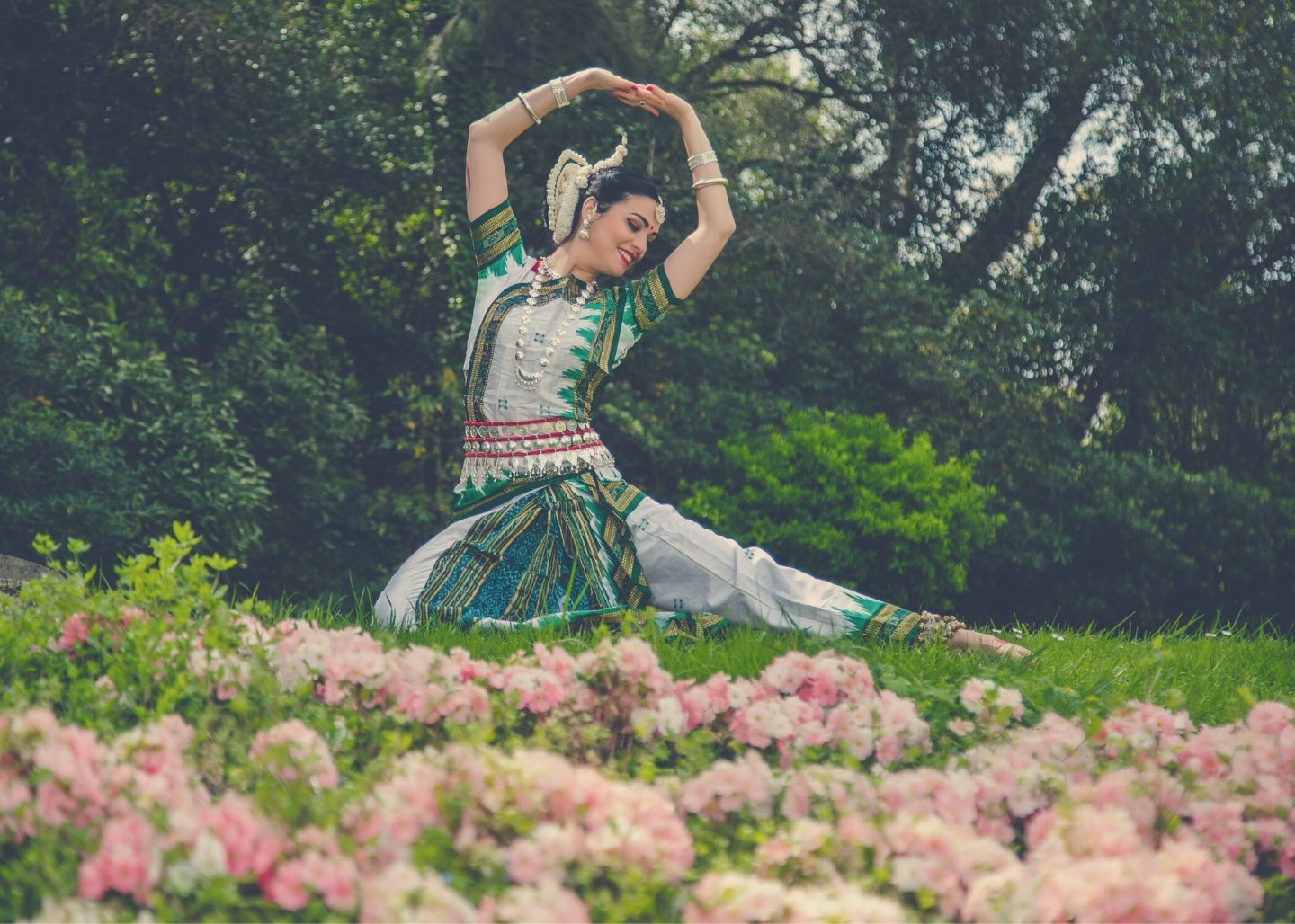
Storytelling based on movement is an exceedingly important element of Classical Indian Dance, highlighting the importance of the details as they define our dance expression. Today I want to talk about the Odissi and Abhinaya. I remember perfectly the very first Odissi I took, and its structure:
I also remember how hard it was to understand the first and the fourth part. Starting a DANCE CLASS with a mantra and a respectful salutation was quite surprising, let alone when I got to sit down and we all started to share different feelings portrayed by facial expressions.
“…and now, surprise” – my teacher would tell me – “like when you see a tiger walking down the street, surprise”
SURPRISE! (My Goodness)
There is a number of defined and listed expressions, to be used to express different emotions:
Shringara: love, beauty
Hasya: laughter
Karuna: sorrow
Raudra: anger
Vira: courage, bravery
Bhayanaka: fear, terror
Bibhatsa: displeasure
Adbutha: surprise
Shanta: peace
Isn’t this amazing? I find it absolutely sublime, defining and categorizing certain expressions, in order to create a narrative and tell a story through dance. Specially because it is a work in progress, an essential part of every dancer’s training. Expressing yourself artistically through different emotions.
Abhinaya means “the art of storytelling without the need of changing the costume or using props”. Of course this includes no words, but only the movement as a performing expression.
Odissi and Abhinaya
Indian Classical Odissi Dance depicts the battles and the deeds of the Gods. It is probably one of the most complicated and eye-catching aspects of this overarching dance.
In order to achieve a successful performance, you need to feel the movement, look, feel and even breathe the way your character would.
This very concept takes the entire dance to another level where the importance of the intention is added to the movement performance.
Abhinaya intends to impact and engage the audience, not only visually, but the emotional side as well. It is all about creating sensations.
I may say the Abhinaya made me connect with myself in a very special way, even though it is not my story I am telling. It helped me zoom out “me” and find myself being a channel at the service of Dance to reach the audience.
This concept can be transposed to any dance form, as dancers perform emotions, although not necessarily their own. You see, when we are performing, it is likely that the feelings we are experiencing are not exactly the same as those we were experiencing while creating the piece. However, you can bring that feeling to life in a certain moment in order to share it with your audience.
For three days, my entire online platform will be 25% OFF, so you can freely choose any course, style or practice you wish to explore.
What’s included:
Perfect for dancers who want to choose their own path.